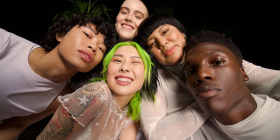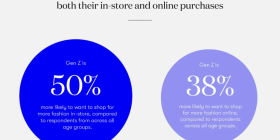Profit
In these politically, economically and technologically dynamic times, it is essential that a fashion brand makes a valuable profit – but how? ‘The apparel and textile sector is the 4th biggest in the world’ Vilaça, J. (2022). ‘generating $2.5 trillion in global annual revenues’ McKinsey (2022). And is one of the most fast paced and trend-led. “The industry, which encompasses everything from textile and apparel brands to wholesalers, importers and retailers, employs more than 1.8 million people’ Vilaça, J. (2022) in the USA alone.
The global economy has recently suffered major shocks; Covid 19 (2019/2020) resulted in disruption to global supply chains, pent-up demand drove up shipping costs, war in Ukraine, the destruction of the Nordstream gas pipelines to Europe, Opec cutting oil production and now Middle East conflict will drive oil prices and inflation deepening the global cost of living crisis. This directly impacts the fashion industry as consumers restrict their spending as the cost of production – energy, distribution and raw materials rise “Cotton and cashmere prices, for example, have increased 45 percent and 30 percent year on year, respectively. McKinsey (2022)
McKinsey in its ‘The State of Fashion’ 2023 report assess the global performance of the luxury /non-luxury sectors. Unsurprisingly consumers who shop luxury are more insulated from economic hardship and forecast growth for 2023 is higher in the luxury sector than the non-luxury sector in the USA, Europe and China.
Given these difficult trading conditions it is essential that brands stay competitive by giving careful consideration to their geographical markets, and how they market themselves. According to Mitterfellner, O (2019) ‘blogging has become a lucrative business sector over the years and can be used to maximise profit in the fashion industry by captivating customers’. Brands can use multi-channel marketing strategies not just to demonstrate their uniqueness but to form relationships with their customers by communicating responsible sustainable principles (not just greenwash) and using new opportunities presented by the metaverse to take their creative campaigns and shopping experiences to a new level. The way a product is designed, curated and endorsed is imperative and dictates wether the consumers will buy. Consumers today like to know what they are buying and why.
Furthermore, a strong product narrative is one example of how creative directors can bridge the gap between creativity and business, ensuring the narrative flows throughout the outlet, online and in store.
Reference list
McKinsey (2022). The State of Fashion 2023: Holding onto growth as global clouds gather. [online] McKinsey. Available at: https://www.mckinsey.com/industries/retail/our-insights/state-of-fashion [Last accessed 19 Oct. 2023].
Vilaça, J. (2022). Fashion Industry Statistics: The 4th Biggest Sector Is More Than Clothing. [online] Fashinnovation. Available at: https://fashinnovation.nyc/fashion-industry-statistics/ [Last accessed 19 Oct. 2023].
Mitterfellner, O (2019) Chapter 5 – social media, blogs and opinion-leaders: who is leading your opinion? Page 83 Publisher Milton: Taylor and Francis group. [Last accessed 19 Oct. 2023]




